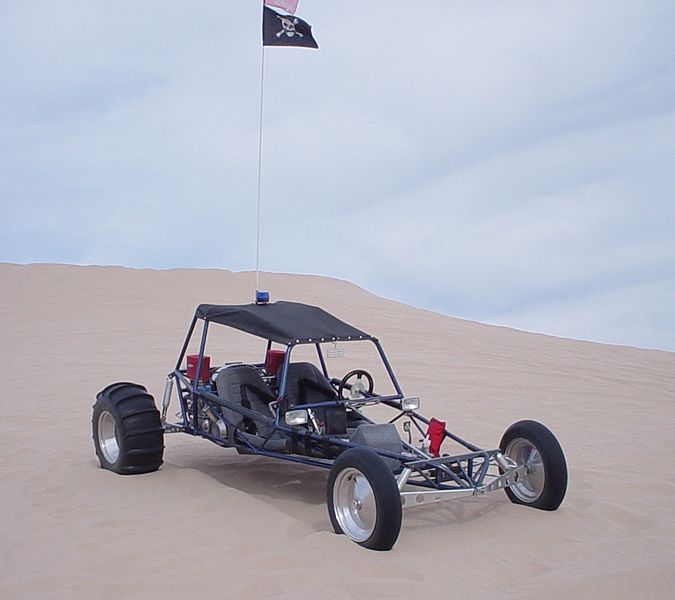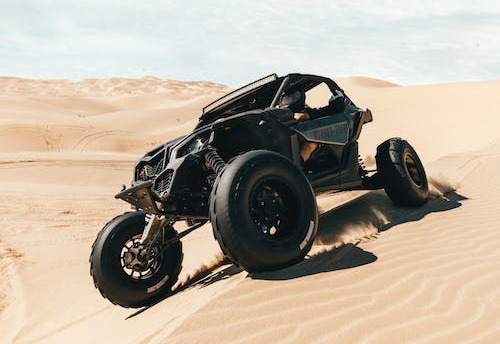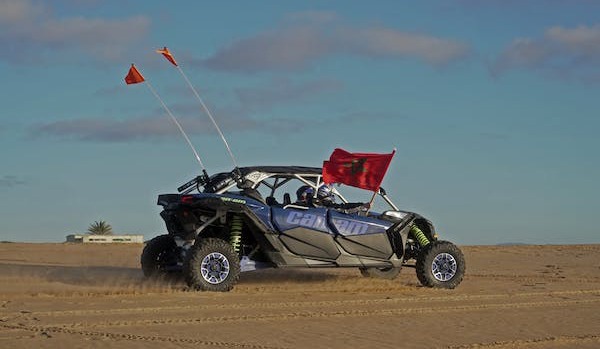What is a Sandrail?
A sand rail, sometimes known as a rail, or sand car, is a compact off-road vehicle made particularly for navigating sand-filled areas. A sand rail is a unique kind of specialty vehicle that is similar to a dune buggy in certain ways and is sometimes misidentified as a sand car or dune buggy. Popular dunes on which to run sundials. Although Sandrails are made primarily for sand, they may be driven on various terrain.
Sand Rail History
After World War II, soldiers returning home were accustomed to operating off-road jeeps and tanks. The off-road community was created as a result of their increased discretionary cash. Driving on the sand and beaches was a component of this off-road activity.
Who invented the sand rail?
Pete Beiring reduced a damaged Volkswagen frame in 1958 and repurposed it. The first dune buggy known as the “Sportster” was built using Pete’s original design two years later, in 1960. “Sand rail” first appeared in the middle of the 1960s. By the 1970s, the majority of VW-powered tubular chassis sand rails were created and constructed by their owners. Compared to the original buggies, the first sand rails were stronger, lighter, and capable of climbing higher dunes.
Modern Sand Rails
The original outdated sand rails were modified to accommodate contemporary shock technology and increased suspension travel in the late 1990s when the desert racing scene began to take off. Mid-travel and long-travel were the names given to these new sand tracks.
Today, if you go to the dunes, you could witness a mixture of the vintage buggies from the 1970s and the newer, more contemporary mid and long-journey rails.
Terms Used to Describe a Sand Rail
Sand rails are frequently referred to as buggies by people. They are all various types of vehicles in theory. Since sand rails evolved from buggies, the most common names for sand rails were sand buggy and sand rail.
As buggies and sand rails developed, new terminology was created to describe these new vehicles. The full list of terms is shown below.
- Sand Buggies
- Sand Rails
- Water Pumpers
- Pan Buggies
- Tunnel Buggies
- Mid-Travel
- Long-Travel
- A Sand Car
Rather than using the phrase “sand rail” to describe the original fiberglass buggies, the term “buggy” is used to describe all the numerous varieties of sand rails.
Driving a Sand Rail in The Dunes
Sand rails are designed to move on soft sand. Since they are light, they can glide across the sand’s surface without becoming caught. Most sand rails have their motors at the back to make their front ends lighter. They can readily turn on dune faces and ascend steep hills because of their low center of gravity.
A unique type of tire known as a paddle tire is mounted on the back sand rails. To improve speed and traction in the sand, these tires contain rubber paddles that sweep down into the ground. To reduce drag on the sand and improve peak speeds, the front tires use smooth rubber tires with no tread or very little tread. Sand rails are constructed entirely to be driven solely on sand, down to the tires. Because of this, rails and buggies are frequently seen on the dunes. To travel on mud or gravel roads, some owners do swap their paddle tires for conventional tires, but this is not very frequent. Sand Rails were designed to be driven on sand.
Different Types of Sand Rails
Each sand rail may be customized with various engine options, seating configurations (one, two, or four seats), and decorative elements. Even though each is unique, most sand rails may be divided into one of these three groups depending on the front end and suspension they have.
Long Travel
These rails are the most expensive and also the most comfortable. They have coil over suspension and A-arm construction. They have the most contemporary look.
Mid Travel
Another modern style that is also built with A-arms but has stock suspension instead of coil overs.
Old school
These sand rails’ front end and suspension are genuine Volkswagen components, and they feature I-beam construction.
Engines and Performance Modifications
Sand rails are constructed using several engine types (V-4, V-6, and V-8). Because it is readily available and has reasonably priced components, the air-cooled Volkswagen is a popular choice. Other sand rails engine alternatives include fuel-injected Honda motors, LS engines, and Subaru engines.
The majority of sand rails run on premium unleaded gasoline, however, certain motors with higher horsepower need racing fuel.
Designs and Accessories
Since sand rails are often manufactured to order, each one is distinct. Each rail is unique, whether it has a roof or not, the design and color of the frame, and the artwork.
Custom seats and coverings, sand tires, communication headsets, GPS navigation, light bars, LED lights, light-up whips, and radio systems are some of the most well-liked extras.
What Is Dune Buggy?
A dune buggy, often referred to as a beach buggy, is a type of recreational vehicle with big wheels and broad tires that is used for off-roading or desert fun on dunes, beaches, and other similar terrain. Typically, the design consists of a topless car with an engine situated in the back. A vehicle can be converted into a dune buggy, or a brand-new one can be built specifically for the purpose.
History of the Dune Buggy
Meyers Manx, founded by Bruce Meyers, an artist, mechanic, boat builder, and surfer, is credited with creating the dune buggy. Meyers gave this enduring automobile its distinctive design.
Meyers’ dune buggy was the first of its kind to be mass manufactured, transcending the concept of a custom-built vehicle. The automobile, which was based on a Volkswagen Beetle and whose engine it also used, was around 36 cm shorter and featured a fiberglass body to lighten it up.
Due to the historical context, the dune buggy rose to prominence as the symbol of nonconformity in the late 1960s. When Meyers offered assembly kits to alter Beetles towards the end of their lifetimes, numerous manufacturers imitated his idea.
Who invented the dune buggy?
Bruce Meyers came up with the idea for the first dune buggy in the 1960s. Meyers asserts that he was not the first to create the dune buggy because other models of the same vehicle were already in production at the time, but he was the first to market and make widely available his design for a fiberglass dune buggy that was based on a Volkswagen Beetle.
Are dune buggies dangerous?
While operating or riding a dune buggy is not inherently dangerous, extreme sports like dune bashing can carry some risk. Generally speaking, the ride will be bumpier the steeper the dunes are. Pregnant women, small children, and those with heart issues should not ride in a dune buggy.
Cost of a Dune Buggy
The price might vary greatly depending on the kind of engine, accessories, and sand rail design. Additionally, the cost will vary significantly depending on whether you are having a rail specially made or building it yourself.
Here are the three primary styles and a range of their usual sale prices so you can have a better sense of what to anticipate paying for a finished sand rail.
- Long Travel: $35,000 – $100,000
- Mid Travel: $8,000 – $15,000
- Old School: $4,000 – $9,000
Staying Safe in The Dunes
It is critical to use caution when using sand rails. The rails’ construction was done with passengers’ safety in mind. Every driver and passenger is required to use a three-point safety seatbelt. To protect passengers in the event of a rollover, rail frames double as roll cages.
Dune buggies must carry a red or orange sand safety flag on the top when traveling in any dunes recreation area. These safety flags contribute to better visibility and accident avoidance.
Another thing to remember is to always keep your arms and legs within the roll cage when riding on a sand rail. To avoid getting sand in your eyes, you should also use eye protection, such as goggles.
Dune Buggy Industry Today
These vehicles have progressed from the original dune buggy to the more contemporary sand rails, and the industry as a whole has grown in popularity. Today, sand rail competitions, special occasions, clubs, groups, and performances exist.
What is the Difference Between a Sand Rail and a Dune Buggy?
Sand rails are constructed from a bespoke frame, and dune buggies are customized versions of existing vehicles. They are both made to be driven in the sand. High-performance engines, a tubular chassis, and a roll cage are typical components of sand rails. Dune buggies are not as quick, many of them are street-legal, and some even have fiberglass frames.






